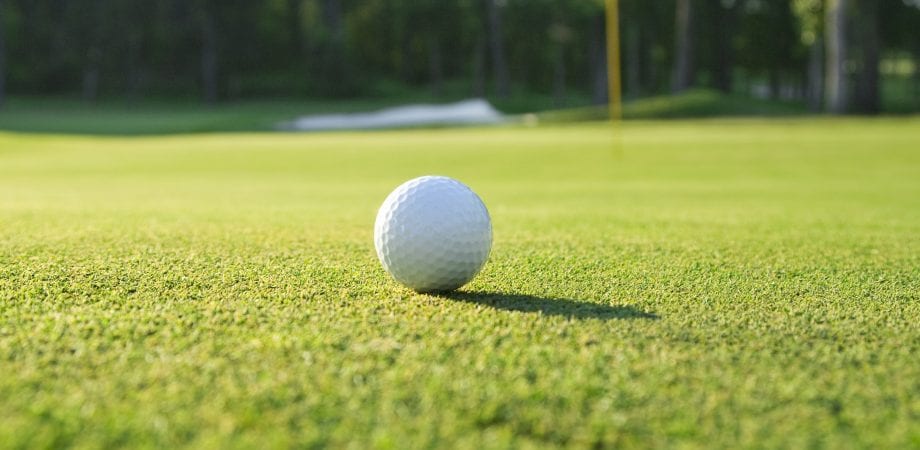What You Need to Know About Summer Decline on Bentgrass and Bluegrass

During the summer months, a decline in turf quality and growth can be a significant problem on putting greens, affecting both bentgrass and bluegrass. Several stressors, both abiotic and biotic, can be attributed to it.
Factors: Abiotic Stress
High soil and air temperatures during the day and night promote summer decline. Surprising to many people, high soil temperatures are more taxing to turf than high air temperatures. High humidity and reduced evapotranspirational cooling (due to poor air movement) contribute to high soil temperatures. The basic physiological functions of turfgrass become substantially diminished when soil temperatures reach, on average, above 86 degrees. When conditions include an extended number of days with highs above 90 degrees, nights with lows over 70 degrees, when the dew point is above 70 or when winds are lower than ten mph, there is a boost in bentgrass decline.
Excessive or deficient soil moisture also encourages summer decline. Root zones with poor water infiltration and low percolation rates will be more susceptible. Wet soils retain heat longer than well-drained soils, and are conducive to plant pathogens like Rhizoctonia solon and Pythium sp.
Poor soil aeration, relatively high humidity, traffic wear, and drought are additional abiotic stresses that contribute to the bentgrass and bluegrass decline.
Factors: Biotic Stress
When it comes to summer decline and biotic stresses, like diseases, insects, and nematodes, keep history in mind. If your course has a past of dealing with diseases, insects, or nematodes, in the summer, take preventative steps before these stressors can stress out your turf and encourage decline. Some common diseases to keep an eye out for are anthracnose, brown patch, and Pythium.
Anthracnose is a fungus that causes basal rot and foliar yellowing. Many of the abiotic stressors listed above contribute to anthracnose, and there are some cultural things you can do to control it. There are also chemical solutions, including ArmorTech CLT 720, Zoxy 2 SC, and Echo Dyad, which can help to prevent the disease.
Brown patch is caused by the pathogen Rhizoctonia, which develops in humid conditions and worsens with imbalanced nutrient levels. It creates circular patches of brown grass with dark rings around the perimeter. Prevention options include Zoxy-T, Exteris Stressgard, and Lexicon.
Pythium can affect turf in various ways, including root rot and root dysfunction. It is preventable with Banol and several of the chemicals already mentioned. Zoxy-T can treat Pythium, brown patch, and anthracnose, making it a good multipurpose fungicide to prevent summer turf decline.
Symptoms
Summer decline symptoms on bentgrass and bluegrass include poor turfgrass vigor, chlorotic turf, reduced turf density, increased disease activity, inhibited root systems, and an overall worsened turf quality.
Reducing the Severity of Summer Decline
Reducing the severity of summer decline begins with year-round turfgrass management practices. Practices to consider both prestress and during the heat of the summer include:
- Routinely topdress ahead of summer stress periods.
- Employ watering practices that encourage deeper roots and precondition turfgrass for summer conditions.
- Monitor soil temperatures.
- Raise the turfgrass’s height of cut (HOC) to aid in producing more carbohydrates and providing more leaf area for transpiration and cooling in the heat. Root loss increases as HOC decreases when stress conditions arrive.
- Switch to solid rollers. They are less aggressive and reduce overall stress to turf.
- Alternate between rolling and mowing putting greens. Rolling greens produce healthier turf, alleviates stress, and effectively provides an increased HOC without sacrificing green speed.
- Increase air circulation and light to greens. Thinning or removing trees around green complexes can provide significant benefits. When available, use fans during the day and night when stress is highest.
- Vent greens every 14 days to improve gas exchange, enhance water infiltration, and stimulate new roots.
- Syringe with a fine mist when cooling greens. Ensure your watering staff understands the difference between cooling greens and watering greens.
- Before hot weather, utilize a deep and infrequent irrigation cycle. If possible, water in the AM during hot weather and hand water as needed.
- Adjust watering amounts with the use of portable meter readings and monitoring daily weather conditions. Incorporate wetting agents/soil surfactants in management programs to assist with pulling and retaining moisture.
- Utilize quality foliar products engineered with specific amino acids designed to help fight stressors.
- Utilize a preventative fungicide program before the onset of heat and humidity (late spring/early summer). Continue with a program throughout the summer stress periods. The basis of a summer decline fungicide program should revolve around a fosetyl-Al product combined with another contact or systemic fungicide (depending on conditions) to provide broad-spectrum disease control.
Preventing summer decline is an all-season task. Well-thought-out turfgrass management practices can make all the difference.







